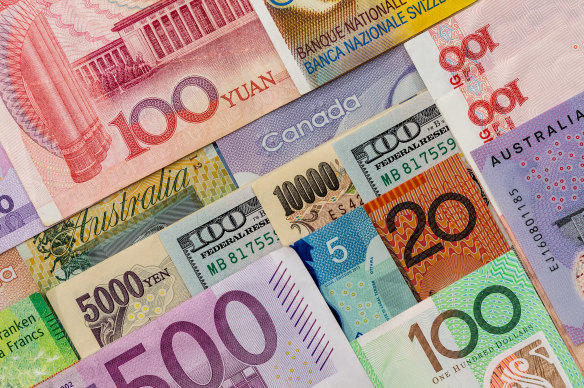Why Bank of Japan’s course correction has put markets on edge
In 2016 it added another novel policy, yield curve control, using its purchases of Japanese government bonds to maintain the 10-year bond rate within a targeted range of zero, plus or minus 25 basis points.
On Tuesday, the bank caught markets completely unprepared for its decision to widen that band to 50 basis points.

The Japanese yen skyrocketed after the Bank of Japan signaled it could soon end its near zero policy rates.Credit:iStock
While it portrayed the move as one designed to improve the way the Japanese bond market functions, it was immediately interpreted by market participants as the precursor to a tightening of Japanese monetary policy, which has increasingly diverged from the policies of the other major banks, which have been raising interest rates and withdrawing liquidity from their financial systems and economies in response to unsustainably high inflation.
That resulted in the yen depreciating markedly against the US dollar as capital flowed towards the higher yields on offer, forcing the Japanese government to sell some of its dollar-denominated assets earlier this year to put a floor under the currency.
Japan imports all its energy requirements which, after Russia invaded Ukraine and triggered a global spike in oil, gas and coal prices, resulted in a massive increase in Japan’s energy costs (and an increase in its inflation rate) as Europe scrambled to access new markets to replace its former dependence on Russian oil and gas.
Energy commodities are priced in US dollars, hence the sensitivity of the US dollar/yen exchange rate.
While Japan’s inflation is being driven by external influences rather than any increase in the domestic demand it has been searching for decades, it is more than double the two per cent long-term rate the BoJ targets.
As the inflation rate has risen, the capacity of the BoJ to keep buying bonds has shrunk (because its own buying has reduced the pool of tradeable securities) and it has become evident that the bank’s policies have had limited effects on economic activity. Its policies have come under increasing scrutiny, and scepticism, from foreign investors.
There is an Australian precedent for what has been happening in the Japanese bond market.
Last year the Reserve Bank, which had introduced a yield curve control policy at the onset of the pandemic in 2020 to cap the three-year bond rate at 0.10 per cent, was forced to abandon the policy after bond investors drove the rate up to 80 basis points.
Loading
The RBA could have done what the BoJ has done and raise the yield target but, as it had already acquired 60 per cent of the freely tradeable 2024 bonds, it would have ended up owning all those bonds if it tried to defend the target.
That’s a very similar position in which the BoJ now finds itself.
It already owns 52 per cent of all the Japanese government’s bonds (and, via exchange-traded funds, a big slab of its equity market).
Trading in the 10-year bonds has been increasingly illiquid and sometimes non-existent. As inflation in Japan has risen for the first time in decades – it is running at about 3.7 per cent – other longer maturity bonds have traded on yields that make a nonsense of the yield curve control policy.
The Japanese economy has stagnated for decades and negative real rates have “zombified” and made less competitive large sectors of the economy.
Hedge funds and other investors have been piling up short positions against the Japanese bond market and long positions in the yen on the premise that the BoJ would be forced to blink and begin falling into line with the direction of other central banks. They were proven right, with Japanese bond yields spiking and the currency strengthening significantly in response to the BoJ’s announcement.
The BoJ may be trying to remove a kink in its yield curve, but it is pushing against a tide. The only real surprise in the bank’s move was its timing.
The BoJ’s governor, Haruhiko Kuroda’s 10-year tenure will expire in April and that was when markets expected there might be changes to Japanese monetary policies once the new governor was in place. Among the favoured candidates there are those who have been sceptical of the efficacy of the yield curve control policy.
Kuroda’s aggressively “dovish” policies do appear to have passed their use-by date. The Japanese economy has stagnated for decades and negative real rates have “zombified” and made less competitive large sectors of the economy.
How the policies are unwound, if they are unwound by his successor, is of enormous significance for the rest of the world because of the potential for major upheavals in global financial markets if Japanese investors decide to repatriate significant amounts of the capital they now hold offshore.
Tuesday’s response to the BoJ’s technical changes to its yield curve control policy provided a foretaste of what might be to come if the bank does change course next year and begins backing out of its decades-long unconventional interventions in its financial markets.
The Business Briefing newsletter delivers major stories, exclusive coverage and expert opinion. Sign up to get it every weekday morning.
For all the latest Business News Click Here
For the latest news and updates, follow us on Google News.
